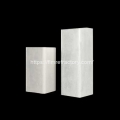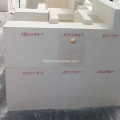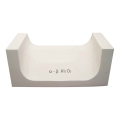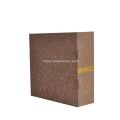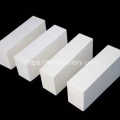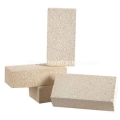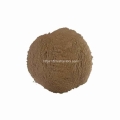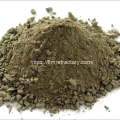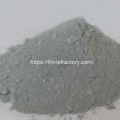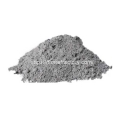- Performance. Innovation. Worldwide. Your trustworthy Refractories Manufacturing Partner--Fireramo
- +86 175 3769 7777
Contact
Contact us on WhatsApp
High Quality Refractory Bricks
Insulation Bricks for Sale
Monolithic Refractory
Analysis of the causes of refractory damage in the stage of molten iron pretreatment
The refractory materials used in the molten iron pretreatment system are subject to the erosion of high-temperature molten iron, erosion of slag, rapid working temperature change, chemical corrosion of pretreatment agents, erosion and penetration of molten iron slag into refractory materials during the actual working process. Therefore, the main factors leading to the damage of this material include mechanical erosion, thermal shock damage, chemical corrosion, slag erosion /slag penetration, and oxidation.
Mechanical Scour
When tapping and pouring molten iron, the molten iron will wash away the bottom and side walls of the molten iron ditch (torpedo tank or molten iron tank) at high speed and force. This accelerates the wear of the material to a certain extent, causing the refractory material to peel off, thus shortening the working life of the refractory materials.
Thermal Stress
During the process of loading, transporting and pouring molten iron, refractory materials have to constantly withstand cyclic temperature change between 500 and 1500°C, which causes the material to be subject to strong thermal shock, forming various cracks inside the material,Then the slag and molten iron will enter the lining material through these cracks and further erodes and washes away the lining material.
Chemical Corrosion
With the development of smelting technology, in addition to being used to contain and transport molten iron, pretreatment agents will also be put into molten iron trenches or torpedo tanks to pretreat the molten iron (desulfurization, dephosphorization, desiliconization, etc.). Pretreatment agents are mainly divided into CaO-based and Na2CO3-based materials. For example, CaF2 treatment agent in CaO base can dissolve the surface layer of alumina, and the resultant product is feldspar, yellow feldspar or glass phase. Na2CO3-based treatment agents, in addition to dissolving the surface layer of alumina, also react with C in the material (1), so sodium-based treatment agents are more corrosive to the material.
Na2O+C→2Na+CO(g)(1)
Slag Erosion and Penetration
The main refractory material used for molten iron pretreatment is ASC refractory bricks. The slag contains high SiO2. At the interface between the slag and the refractory material, the anorthite and anorthite produced by the reaction between the SiO2·CaO in the slag and the small-particle Al2O3 in the material will detach from the matrix of the refractory material.When the Al2O3 in the matrix has finished reacting, the slag begins to corrode the larger Al2O3 particles in the material.When the matrix in the material is eroded, the SiC particles in the material will become loose and be involved in the slag. At the interface between slag and molten iron. The following reactions are prone to occur: SiO2+2C→Si+2CO (2)
It can be seen from formula (2) that the higher the SiO2 content in the slag, the more complete the reaction will be, and the CO gas generated by the reaction will accelerate the erosion of the material by the slag. This affects the service life of the iron trench material. The following reactions may also occur at the interface between slag and molten iron:
2Fe+O2→2FeO(3)
SiC+2FeO→Si
O2+2Fe+C(4)
FeO+C→Fe+CO(5)
It can be seen from the above reaction equation that the reaction of C reducing FeO will inhibit the oxidation reaction of iron, making reaction (4) difficult, weakening the oxidation of SiC, and thus weakening the erosion of slag and iron on refractory materials.
Oxidation Failure
The refractory bricks used for molten iron pretreatment are in an oxidizing atmosphere, which causes the carbon in the refractory material to be oxidized, causing the structure of the refractory material to change. Figure below gives a schematic diagram of the mechanism of oxidation failure of the material. When intact materials come into contact with oxygen in the air, the surface of the material is oxidized, and the specific surface area of the material increases. Then it further reacts with oxygen to produce larger defects. This cycle will cause the material structure to crack, and ultimately the material will be damaged.

Refractory materials used for the molten iron pretreatment are very important.If you want more details about how to solve the problems above,please feel free to contact us.
Perhaps you are interested in refractories for steelmaking and refractories for ironmaking.
Specializing in refractory materials for over 20 years, we provide professional refractory solutions for the global high temperature industry.
Related Posts:
- Causes and solutions to cracking of castables after baking
- Enhancing the Medium Temperature Strength of Refractory Castables
- Ways to ensure the accuracy of refractory brick acceptance results
- Acceptance inspection after cement kiln construction
- Three Common Ways of Damage to the Sliding Nozzle for Ladles
Theme By Fireramo
